READER COMMENTS ON
"Misguided War on Quitting Smoking Continues: NYTimes Runs Hit Piece on E-Cig Liquid Nicotine"
(23 Responses so far...)
COMMENT #1 [Permalink]
...
Silat
said on 3/24/2014 @ 5:30 pm PT...
"As one caller to the radio show pointed out, that ill-considered policy is akin to forcing recovering alcoholics to go sit in a bar."
That is one of the worst analogies I have heard in a long long time.
How is not letting people vape in public to get their fix the same as the ludicrous comment that it is like forcing alcoholics to sit in a bar?
Alcoholics are not trying to vape their alcohol unless they have fallen off the wagon.
You cig junkies are not quitting by vaping.
LOL
COMMENT #2 [Permalink]
...
Brad Friedman
said on 3/24/2014 @ 5:52 pm PT...
Silat asked @ 1:
How is not letting people vape in public to get their fix the same as the ludicrous comment that it is like forcing alcoholics to sit in a bar?
You seriously don't understand the analogy? Giving the rest of your remarks, it seems you "don't understand" because you don't want to understand it, and you'd like to help people continue to die by smoking. Nonetheless, I'll respond.
If I go to work every day and must go outside or to a designated smoking area to have a cigarette, isn't it better if I stay inside, vape at my desk, and don't hang out in the smoking lounge? As the analogy notes, sending someone who is trying to quit smoking out to hang out with smokers is almost exactly like sending an alcoholic to hang out with people drinking.
If you don't understand that, I don't know how to help you.
You cig junkies are not quitting by vaping.
Given that remark, it's clear you know absolutely nothing about either smoking or vaping. Though it doesn't keep you from mouthing off about both. Either way, I hope my response here helps others who actually DO give a damn about helping to save people's lives.
COMMENT #3 [Permalink]
...
RicoC
said on 3/24/2014 @ 6:34 pm PT...
As a former smoker--over 14 years off the evil weed--I say anything that can get people to quit ingesting carcinogens, not to mention harming those who in the line of firing up, is a very positive thing. Since dude didn't like the analogy you cited how about this one: using e-cigs to kick the cancer sticks is akin to quitting meth by drinking several cups of coffee a day. While there is certainly a habitual element to substituting one for the other, using a less harmful substance to help you keep using one that will destroy you is a no-brainer that even the geniuses at the NYT should be able to understand. Though they're apparently too busy citing the vague imprecations of anonymous toxicologists to report actual facts. Meantime, good on you for being able to stop smoking, and keep up the good fight with respect to e-cigs, Brad.
COMMENT #4 [Permalink]
...
Organik
said on 3/24/2014 @ 6:38 pm PT...
Brad, I feel I'm a kindred spirit. From following election fraud to quitting smoking via vape, we have a lot in common. I think you're spot on with these comments. I just don't get it. It worked for me, and millions of others I'm sure. As far as "second hand vape" issues, you're right it is exactly the same as fog and haze juice, except the nicotine. I work in theatre and use those products regularly, very few complain. Cigarette smoke otoh stays in your clothes, on your breath, fingertips...just nasty in comparison. None of that with vaping.
I do think this overreaction is just ignorance and paranoia...just like voter ID laws!
COMMENT #5 [Permalink]
...
zapkitty
said on 3/25/2014 @ 12:02 am PT...
Question: I've gathered that the cigarette-sized lookalikes made by the tobacco corps are crap quality and taste like it but what are the smallest and easiest to use e-cigs that are worth recommending to a friend who wants to quit?
COMMENT #6 [Permalink]
...
Angel Scott
said on 3/25/2014 @ 6:25 am PT...
Congratulations Brad! I love you and have always hated that "cool" pic of you smoking.
Vaping is incredibly awesome, what a way to save lives and health.
I have to say that whatever they use for the "flavorings" is absolutely nausiating. Pure vaping doesn't bug me at all, but put whatever nasty fake "cherry" is in there and it becomes noxious. Keep that in mind vapors!
COMMENT #7 [Permalink]
...
mr.ed
said on 3/25/2014 @ 6:48 am PT...
Nicotine is a deadly poison. Look at the skull and crossbones on a bag of it at your garden supply dept. Not letting those who don't foolishly ingest it also get a dose is just common sense and good public policy. Don't smoke or vape near me. We'll both be on the news, and you'll look the worse for it.
And I do understand the addiction. I was a junkie for twenty years.
COMMENT #8 [Permalink]
...
Savantster
said on 3/25/2014 @ 9:24 am PT...
Yes, @Mr. Ed, nicotine is a deadly poison.. at a specific DOSE. Or did you not bother reading that bit from Brad, and proved time and again by science over and over. ... News flash, Zucchini has nicotine in it. I'm not hearing of anyone dying from nicotine poisoning from eating that. Know what else is a toxic poison? Alcohol! Yet, that's widely used by 10s of millions of Americans -every day-.. safely.. because it's about DOSE.
It will never cease to amaze me just how quickly people shut off their brains when their feelings decide to dictate behavior. There's a reason this country (and our species) is going down the toilet, and I'd suggest those behind the wheel of this disastrous bus ride to hell are the people who refuse to use logic, reason, and science (read: reality and facts) to form their world view.
All that said, I vape as well. I just can't get my head around how patently ignorant some public officials are, or how they stay in office given their obvious and abject stupidity. Banning e-cigs is 100% about ignorance and willfully rejecting facts. Of course, it's becoming standard policy to act on fantasy and superstition instead of reality. I just don't get how those idiots expect to continue living in a modern, technological world once they ban reality from the public sphere. Cave Dwelling, here we come! (again)
COMMENT #9 [Permalink]
...
Lora
said on 3/25/2014 @ 9:24 am PT...
Like so many other issues, this is not black and white; neither vaping "Goood," nor vaping "Baaad."
There needs to be some actual reasonable and scientifically accurate dialogue out there, and no silly laws made on the spur of the moment.
But reason doesn't sell news, and it doesn't seem to sway too many voters. Alas.
COMMENT #10 [Permalink]
...
genedebs
said on 3/25/2014 @ 9:40 am PT...
My gut reaction to the campaign to ban e-cigs is that it may be being run by the tobacco industry itself as a way to denigrate something that would be a real threat to their products. Makes sense. If indeed using e-cigs as way to quit smoking is as effective as Brad says it is, then the tobacco industry has every reason to want to damage it.
COMMENT #11 [Permalink]
...
Brantl
said on 3/25/2014 @ 1:22 pm PT...
Sorry, Brad but I don't want to inhale your nicotine vapor, either. I would much rather you take it out of the building where I'm breathing, too.
COMMENT #12 [Permalink]
...
Brad Friedman
said on 3/25/2014 @ 3:41 pm PT...
Brantl selfishly and dangerously said @ 11:
Sorry, Brad but I don't want to inhale your nicotine vapor, either. I would much rather you take it out of the building where I'm breathing, too.
You won't inhale my nicotine vapor. If you did, you'd have to try. And if you did that it still wouldn't harm you (at least we have no such evidence of any harm.)
But I understand, you want to endanger the lives of others because you imagine some sort of inconvenience.
Sorry, Brantl, but I don't want to inhale your caffeine vapor from your coffee. I would much rather you take your coffee outside to the smoking lounge when you want to drink it to avoid inconveniencing me. I'll presume you agree with that, since I'll presume you're not being a hypocrite here.
COMMENT #13 [Permalink]
...
Silat
said on 3/25/2014 @ 3:45 pm PT...
Brad you do of course know of the many studies showing the risks of vaping nicotine and there are studies showing it does not help people quit? It is not all wine and roses. And come on, you say I would like to help people die because I disagree with you and your analogy? Over the top Brad.
COMMENT #14 [Permalink]
...
Brad Friedman
said on 3/25/2014 @ 4:58 pm PT...
Silat said @ 13:
Brad you do of course know of the many studies showing the risks of vaping nicotine and there are studies showing it does not help people quit? It is not all wine and roses.
Um, I have read many studies on the matter. Have you? Feel free to show me the studies you believe "show the risks of vaping nicotine". URL to the actual study, not a bad article about them because most such articles (unlike the ones I've linked to in the story above --- did you read them?) misinterpret the studies they purport to cover.
But I can't read everything. So if you have such studies, please feel free to share their URLs with us all!
And come on, you say I would like to help people die because I disagree with you and your analogy? Over the top Brad.
In case I wasn't blunt enough in my previous comment: Yes, making it more difficult for people to vape means more people will stay smokers and die. If you think that's over the top, I would suggest it's because you don't care to find out what the facts are on this issue. More smokers and fewer vapers mean more people die needlessly. If you have information that might even suggest otherwise, I hope you'll share that with us as well.
Thanks!
COMMENT #15 [Permalink]
...
Julian Ware
said on 3/25/2014 @ 5:24 pm PT...
I am a big fan of your work, but you seem completely off the reservation here; both intellectually dishonest and personally biased.
You can't claim something hasn't been studied properly as a means of defending it and you don't seem adequately skeptical or patient about holding off judgement until studies have been done. Instead you are throwing around proclamations and insults that suggestion total confidence when there is not to be had.
While I can guess as to potential biases, I'm sure you saw that a new study was published suggested that on 13% of people using e-cigs quite smoking. That's no more effective than other means. But really, the effectiveness for smoking cessation isn't my main point and seems to be your only argument which demonstrates a huge blind spot to me.
First something you said which is directly misleading. PG has not been approved for inhalation. Period. Second, in most place vaping is entirely legal for kids. Your position doesn't seem to include the understanding that this is a HUGE bonanza for the tobacco industry and that tobacco or not, people are becoming addicted to nicotine as a result of this. Old people able to quit are not the only story here. Third, we don't know if nicotine laced vapor exhaled into the environment of ex-smokers affects their ability to stay off nicotine. If I were to guess, I'd say even small amounts would have an impact. Fourth, vaping isn't being make illegal. You can't smoke in doors and now you can't vape in doors and that has no impact at all. I don't care one bit whether you are upset that you can't vape in a movie, restaurant, or airplane. Until multiple peer reviewed studies have been done proving no harm you argument is entirely moot. Fifth, maybe you haven't noticed, but because it's easier on the mouth and lungs, there are cadres of idiot vapers out there inhaling that crap every 10 seconds all day long. It's not water vapor and we don't need to wait for studies to know it's less healthy than not doing it. Nicotine or not, this is not behavior we should be encouraging.
Basically you are treating this issue like e-cigs are like methadone and some kind of medical product. They aren't they are a huge, unregulated crazy among kids and adults, we don't know the long term impact, and crappy industries are making billions.
I think you really need to take into account the bigger picture here, be a bit less personally biased and bit more patient, and express your concerns in a more nuance fashion.
Anyway, on every other topic you are my hero, so keep up the good work.
COMMENT #16 [Permalink]
...
Brad Friedman
said on 3/25/2014 @ 5:27 pm PT...
ZapKitty asked @ 5:
Question: I've gathered that the cigarette-sized lookalikes made by the tobacco corps are crap quality and taste like it but what are the smallest and easiest to use e-cigs that are worth recommending to a friend who wants to quit?
The old "asking for a friend" ruse, eh, Zap? 
But kidding aside, yes, the ones that look like actual cigs are generally crap. Taste like crap and work like crap and may be unlikely to help "your friend" stop smoking. That said, I can't speak for some of the newer ones like Blu --- which I think actually use juice, instead of just being disposable --- though it's made by a Big Tobacco company (Lorillard), so I wouldn't put it by them to create a crap e-cig either in hopes of keeping people smoking.
Beyond that, the best e-cigs are also incredibly imperfect, given the newness of the technology. I keep trying new pieces myself, as they are all decidely imperfect.
Best place to start though would be to walk into a vape store, if you or your "friend" has one near you, and ask for a starter kit and then go from there.
Basically, what you're looking for is a battery and a tank (which you then fill up with e-juice). There are several different types of both, but the eGo battery (I recommend the eGo-C Twist) is becoming an industry standard, which allows you to use tanks from many different manufacturers. Proprietary systems don't allow for that.
The biggest issue is probably finding a juice your "friend" likes. For that, a vape store is also useful, since many will allow you to try out all the different flavors right there in the shop. (I prefer the coffee/tobacco like flavors, rather than the sweet fruity flavors, personally.)
After that, and after you find a flavor and a nic level you're comfortable with, buying online gets a bit easier, since you can buy juices directly from whichever manufacturer you like (I like, among others, Virgin Vapor for their 100% organic juices --- which include Kosher nicotine! - Who knew?) and additional parts/replacements etc. from eBay, where they are much cheaper than at most brick and mortar stores.
Hope that gets "your friend" started! Good luck to "him"/"her" and let me know if "he"/"she" has any other questions! Hope others will feel free to ring in with better advice than I've supplied above as well! I've only been at this for a year or so, and the industry is changing radically, literally every day.
COMMENT #17 [Permalink]
...
zapkitty
said on 3/25/2014 @ 5:53 pm PT...
Brad Friedman said...
"The old "asking for a friend" ruse, eh, Zap?"
Mildly amusing the first time, somewhat less so with each repetition...
Actually, I don't smoke but I've family members who do and I've always been concerned for them.
I do thank you for your advice and will attempt to get one of them to visit a vape store.
COMMENT #18 [Permalink]
...
Brad Friedman
said on 3/25/2014 @ 6:03 pm PT...
ZapKitty rebuffs @ 17:
Mildly amusing the first time, somewhat less so with each repetition...
They can't all be pearls, Zapper! (Oddly, I enjoyed it more each new time!) 
COMMENT #19 [Permalink]
...
Rekster
said on 3/25/2014 @ 6:31 pm PT...
Brad, this was an excellent post! Those "experts" who are commenting about vaping not working for stopping smoking are full of @#it.
I tried e cigs after reading a blog post by Mike Malloy that must have been from your experience. I didn't know it at the time though. I decided to give it a try and have not smoked an cigarette since.
I started out with the crappy cigarette style ecig and have also tried numerous iterations of devices (I just ordered a new one today, the Innokin iTaste MVP V2.0, that looks really good.) I would highly recommend vaping to anyone looking to stop smoking. I tried numerous other methods with no success, I probably chewed 10K pieces of nicorette gum and nearly went broke doing that.
Thanks for your advocacy for us vapers out here!
COMMENT #20 [Permalink]
...
Joel
said on 3/26/2014 @ 4:25 pm PT...
While I agree this is an issue that needs to be treated differently than smoking, I think it is unfair to characterize it as 100% good. Just because it doesn't have the obvious problems inherent in smoking, vaping (sounds stupid btw but I don't have anything better) should not be treated as a right we have to do anywhere we like. It's rude to blow smoke or vapor from your lungs onto others. I see it as being similar to spitting in public. Sure you may not have Tuberculosis, but I don't know that, and I don't want saliva or vapor from your lungs all over me.
Smokers have had it pretty rough for the last few decades, and it is only natural to fight for what's yours. I think some of the ways we have ostracized people who smoke has been draconian and unfair. I also think some people have swung the pendulum too far the other way. No, you shouldn't be able to blow your vapor anywhere you damn well please.
Because this is such a new method, there hasn't been a lot of credible study on the long term effects of vaping. In fact one could argue it hasn't been around long enough for there to be any long term study. So the algebra we are using in deciding its fate is wrong on both accounts. It isn't as simple as smoking=bad therefore e-cigs=bad, but it also isn't e-cigs = not smoking therefore not bad.
The problem as I see it is that rude people ruin it for everyone. Just like it is rude to light up in a crowded space, it is also rude to vape there too. There should be more leeway by quite a bit because there are so many fewer poisons associated with it, but we should be mindful of the fact that we don't know the unintended consequences either.
Brad, do you know if the CDC or any other public health organization has studied the possibility of disease transmission through e-cigarettes? I haven't seen any, but that doesn't mean much. It may just be paranoia, but living in LA, I don't like the idea of TB being more spreadable than it already is. Maybe the nicotine kills the germs? That would be kind of cool actually. There's still the ick factor, but that just goes back to not being a dick.
New technologies are tough to navigate and right now I think both sides are a bit too strident. It will be much easier if we work together to find the real dangers as well as fair solutions, because we ultimately want what's best for everybody.
COMMENT #21 [Permalink]
...
Brad Friedman
said on 3/26/2014 @ 11:01 pm PT...
Joel said @ 20:
I think it is unfair to characterize it as 100% good.
You're right. Because nobody has come up with anything not good about it, it might be, some day. So let's go with that. Also, just because nobody has come up with anything bad about eating tomatoes (which contain nicotine, btw! GASP!) I think it's best we make tomato eaters go outside with the smokers if they want to eat them.
Just because it doesn't have the obvious problems inherent in smoking, vaping (sounds stupid btw but I don't have anything better) should not be treated as a right we have to do anywhere we like.
So, you're saying that if the Government feels like banning tomatoes, even if they can show no public health or safety issue, they should be able to do that? And you'd support that? Really? What if it was shown that tomatoes cut risk of heart attack in half...and they banned them anyway. You're good with that?
It's rude to blow smoke or vapor from your lungs onto others. I see it as being similar to spitting in public.
Seriously, dude? It's like "spitting"? How so?
Being rude is being rude. If someone is close enough to blow on your face, that's probably rude, if you don't want them to do it. That seems true no matter if they are blowing visible water vapor or non-visible water vapor out of their mouths, no?
Sure you may not have Tuberculosis, but I don't know that, and I don't want saliva or vapor from your lungs all over me.
You've never even seen anyone vaping, have you?
Brad, do you know if the CDC or any other public health organization has studied the possibility of disease transmission through e-cigarettes?
I do not. Then again, I don't see how that could even be possible (anymore than breathing causes disease transmission). You do realize you're not required to inhale anybody's breath if you don't want to, right?
I haven't seen any, but that doesn't mean much. It may just be paranoia, but living in LA, I don't like the idea of TB being more spreadable than it already is.
I don't even understand that. How are you suggesting that vaping could spread TB anymore than breathing does? (And, again, I have to ask: You've never even seen anyone vaping, have you?)
New technologies are tough to navigate and right now I think both sides are a bit too strident. It will be much easier if we work together to find the real dangers as well as fair solutions, because we ultimately want what's best for everybody.
Sure ya do. Let's make sure that half a million people keep dying needlessly every year until we find out "what best for everybody" --- including the people that think vaping might spread TB.
Good god.
P.S. Since you're asking about the CDC, please feel free to peruse this guy's blog. Before ya do, just in case you miss it, here's his bio:
Dr. Siegel is a Professor in the Department of Community Health Sciences, Boston University School of Public Health. He has 25 years of experience in the field of tobacco control. He previously spent two years working at the Office on Smoking and Health at CDC, where he conducted research on secondhand smoke and cigarette advertising. He has published nearly 70 papers related to tobacco. He testified in the landmark Engle lawsuit against the tobacco companies, which resulted in an unprecedented $145 billion verdict against the industry. He teaches social and behavioral sciences, mass communication and public health, and public health advocacy in the Masters of Public Health program.
COMMENT #22 [Permalink]
...
Joel
said on 3/27/2014 @ 10:32 am PT...
Brad,
I have seen a number of people use these products. Most are considerate, but some blow a cloud of funky smelling vapor that I have been covered in and could not avoid. I'm not saying we should stop them altogether, you clearly skipped over the part where I say they should get more latitude because of their positives. I am just trying to give a different perspective from someone who may be affected by their use.
Like I said before, rude people make life much harder for the rest of us. Because I have had several people blow their vapors on me, I know that some people feel that what they are doing is perfectly acceptable because it isn't smoke. It isn't the same as being so close that you are breathing on someone. The vapor hangs for a few moments, and disperses over a larger area than a simple breath.
This is why I brought up disease transmission. Many germs like warm, wet, spaces, and many are transmitted in tiny droplets we expel by sneezing or coughing. The vapor seems on its face to be a pretty good place for bacteria to move about and cover a larger area than it might otherwise. I'm not saying that it does, just that I would like to know if this has been studied. Smokers have double the rate of TB than non-smokers, so it seems to me to be a fair question.
I have lost several family members to smoking related illnesses, so don't misunderstand, I am all for effective ways we can help people quit. I am just trying to ask the right questions so that we don't go overboard in the wrong direction.
COMMENT #23 [Permalink]
...
Jazzidiot
said on 3/28/2014 @ 12:05 pm PT...
Brad, thank you so much for standing up to ignorance. One important point I didn't hear is this: if a vaper (?) is sent to (usually small) smoking area, s/he will be at GREAT RISK from all that second hand smoke - which I understand is the WORST kind of cig smoke. THIS is a health issue, no?
 For all of the long-time smokers who are quitting or have now quit the deadly habit (myself included) thanks only to the miracle of e-cigs (which offer none of the thousands of known, harmful byproducts of smoking tobacco), it's remarkable to see anti-smoking zealots actually fighting against their use in myriad ways.
For all of the long-time smokers who are quitting or have now quit the deadly habit (myself included) thanks only to the miracle of e-cigs (which offer none of the thousands of known, harmful byproducts of smoking tobacco), it's remarkable to see anti-smoking zealots actually fighting against their use in myriad ways.


 Judge Dismisses Long-Running Challenge to GA's Unverifiable, Insecure E-Vote System: 'BradCast' 4/1/25
Judge Dismisses Long-Running Challenge to GA's Unverifiable, Insecure E-Vote System: 'BradCast' 4/1/25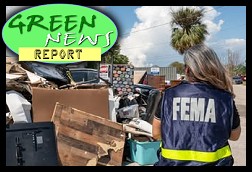 'Green News Report' 4/1/25
'Green News Report' 4/1/25
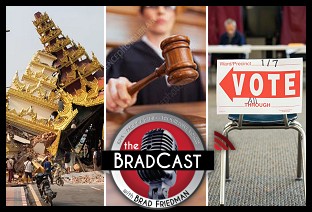 Bad Court and Election News for Trump is Good News for America: 'BradCast' 3/31/25
Bad Court and Election News for Trump is Good News for America: 'BradCast' 3/31/25 Sunday 'Great Start!' Toons
Sunday 'Great Start!' Toons Vets Push Back at Trump, Musk Plan to Slash Health Care, 80K V.A. Jobs: 'BradCast' 3/27/25
Vets Push Back at Trump, Musk Plan to Slash Health Care, 80K V.A. Jobs: 'BradCast' 3/27/25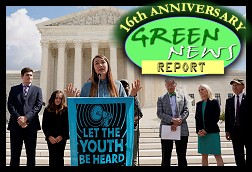 'Green News Report' 3/27/25
'Green News Report' 3/27/25 Signal Scandal Worsens for Trump, GOP; Big Dem Election Wins in PA: 'BradCast' 3/26
Signal Scandal Worsens for Trump, GOP; Big Dem Election Wins in PA: 'BradCast' 3/26 'Emptywheel' on Why Trump NatSec Team Should 'Resign in Disgrace' After Signal Chat Debacle: 'BradCast' 3/25/25
'Emptywheel' on Why Trump NatSec Team Should 'Resign in Disgrace' After Signal Chat Debacle: 'BradCast' 3/25/25 'Green News Report' 3/25/25
'Green News Report' 3/25/25 USPS 'Belongs to the People, Not the Billionaires': 'BradCast' 3/24/25
USPS 'Belongs to the People, Not the Billionaires': 'BradCast' 3/24/25 Sunday 'Suddenly Conceivable' Toons
Sunday 'Suddenly Conceivable' Toons 'Green News Report' 3/20/25
'Green News Report' 3/20/25 We're ALL Voice of America Now: 'BradCast' 3/20/25
We're ALL Voice of America Now: 'BradCast' 3/20/25 What Trump's 'Timber Production Expansion' Means (and Costs): 'BradCast' 3/19/25
What Trump's 'Timber Production Expansion' Means (and Costs): 'BradCast' 3/19/25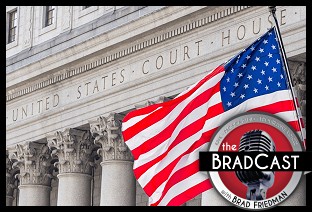 Courts Largely Holding Against Trump, Musk Lawlessness: 'BradCast' 3/18/25
Courts Largely Holding Against Trump, Musk Lawlessness: 'BradCast' 3/18/25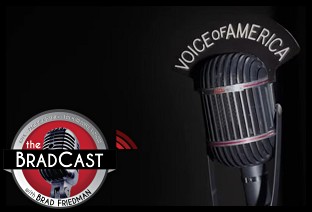 Chief VOA Reporter on Outlet Falling Silent First Time Since 1942: 'BradCast' 3/17/25
Chief VOA Reporter on Outlet Falling Silent First Time Since 1942: 'BradCast' 3/17/25 Trump EPA Unveils Plans to Endanger, Sicken Americans: 'BradCast' 3/13/25
Trump EPA Unveils Plans to Endanger, Sicken Americans: 'BradCast' 3/13/25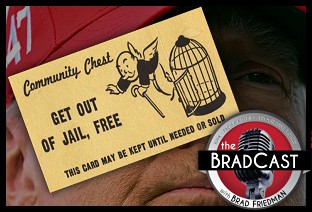 Trump Nixed Enforce-ment Against 100 Corp. Lawbreakers: 'BradCast' 3/12/25
Trump Nixed Enforce-ment Against 100 Corp. Lawbreakers: 'BradCast' 3/12/25 Bad Day for 'Strongmen': 'BradCast' 3/11
Bad Day for 'Strongmen': 'BradCast' 3/11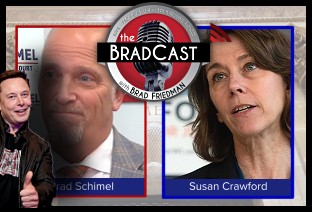 WI Election Could Flip Supreme Court Control, Musk Jumps In: 'BradCast' 3/10
WI Election Could Flip Supreme Court Control, Musk Jumps In: 'BradCast' 3/10
![Click to show/hide [+]](https://bradblog.com/images/toggle_plus.gif)
 VA GOP VOTER REG FRAUDSTER OFF HOOK
VA GOP VOTER REG FRAUDSTER OFF HOOK Criminal GOP Voter Registration Fraud Probe Expanding in VA
Criminal GOP Voter Registration Fraud Probe Expanding in VA DOJ PROBE SOUGHT AFTER VA ARREST
DOJ PROBE SOUGHT AFTER VA ARREST Arrest in VA: GOP Voter Reg Scandal Widens
Arrest in VA: GOP Voter Reg Scandal Widens ALL TOGETHER: ROVE, SPROUL, KOCHS, RNC
ALL TOGETHER: ROVE, SPROUL, KOCHS, RNC LATimes: RNC's 'Fired' Sproul Working for Repubs in 'as Many as 30 States'
LATimes: RNC's 'Fired' Sproul Working for Repubs in 'as Many as 30 States' 'Fired' Sproul Group 'Cloned', Still Working for Republicans in At Least 10 States
'Fired' Sproul Group 'Cloned', Still Working for Republicans in At Least 10 States FINALLY: FOX ON GOP REG FRAUD SCANDAL
FINALLY: FOX ON GOP REG FRAUD SCANDAL COLORADO FOLLOWS FLORIDA WITH GOP CRIMINAL INVESTIGATION
COLORADO FOLLOWS FLORIDA WITH GOP CRIMINAL INVESTIGATION CRIMINAL PROBE LAUNCHED INTO GOP VOTER REGISTRATION FRAUD SCANDAL IN FL
CRIMINAL PROBE LAUNCHED INTO GOP VOTER REGISTRATION FRAUD SCANDAL IN FL Brad Breaks PA Photo ID & GOP Registration Fraud Scandal News on Hartmann TV
Brad Breaks PA Photo ID & GOP Registration Fraud Scandal News on Hartmann TV  CAUGHT ON TAPE: COORDINATED NATIONWIDE GOP VOTER REG SCAM
CAUGHT ON TAPE: COORDINATED NATIONWIDE GOP VOTER REG SCAM CRIMINAL ELECTION FRAUD COMPLAINT FILED AGAINST GOP 'FRAUD' FIRM
CRIMINAL ELECTION FRAUD COMPLAINT FILED AGAINST GOP 'FRAUD' FIRM RICK SCOTT GETS ROLLED IN GOP REGISTRATION FRAUD SCANDAL
RICK SCOTT GETS ROLLED IN GOP REGISTRATION FRAUD SCANDAL VIDEO: Brad Breaks GOP Reg Fraud Scandal on Hartmann TV
VIDEO: Brad Breaks GOP Reg Fraud Scandal on Hartmann TV RNC FIRES NATIONAL VOTER REGISTRATION FIRM FOR FRAUD
RNC FIRES NATIONAL VOTER REGISTRATION FIRM FOR FRAUD EXCLUSIVE: Intvw w/ FL Official Who First Discovered GOP Reg Fraud
EXCLUSIVE: Intvw w/ FL Official Who First Discovered GOP Reg Fraud GOP REGISTRATION FRAUD FOUND IN FL
GOP REGISTRATION FRAUD FOUND IN FL




































